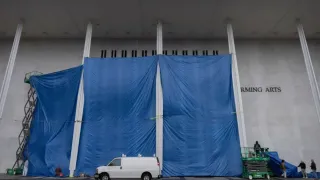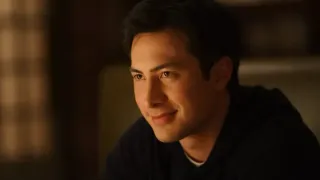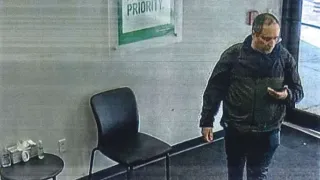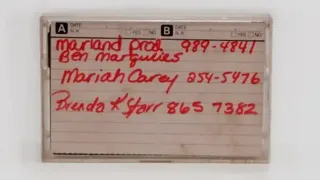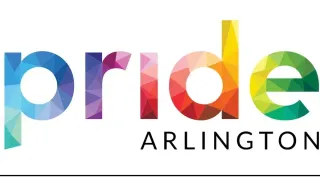June 11, 2021
San Francisco Roars Back 1920s-Style with Plenty of Queer Flair
Heather Cassell READ TIME: 9 MIN.
San Francisco comes back to life as the pandemic restrictions ease and the Golden State gears up for its June 15 reopening.
Few cities in the U.S. are as iconically queer as San Francisco. After more than a year of pandemic restrictions, the City by the Bay is poised to emerge as fabulous as before. Harkening back to the 1920s, cultural institutions, attractions, restaurants and hotels nod to the city's
buoyant and resilient history with fresh perspectives that remind us the best is yet to come.
San Francisco has maintained low new COVID-19 cases for several weeks combined with a vaccination rate far above the national average. As a result, hotel reservations are ticking upward, restaurant tables are filling up, and the historic streetcars are rolling up and down the Embarcadero and Market Street from the Wharf to the Castro once more.
A recent stroll through Golden Gate Park revealed people out on the grass outside the Conservatory of Flowers enjoying the unusually warm sunny day, with visitors lined up at the California Academy of Science to see the new Sharks exhibit (through Jan. 23, 2022). Others queued up for the de Young Museum to check out exhibits like "Uncanny Valley: Being Human in the Age of AI." (through June 27).
For a bird's-eye view, people lined up to ride the SkyStar Wheel, the traveling observatory Ferris wheel, which reopened March 4. Some pandemic protocols remain in place for guests wanting to get into one of the 36 six-person gondolas that rise above the park's treetops between the academy and the museum providing spectacular views of San Francisco from the Pacific Ocean to the Bay.
Installed during the pandemic, the wheel became a "symbol of hope" for San Franciscans and visitors, said the wheel's publicist Jon Finck. SkyStar Wheel will remain in San Francisco's Golden Gate Park through March 2025.
Roaring Twenties 2.0
The city is not back to its normal level of vivacity but getting notably closer. There is a sense of déjà vu: the familiar clinging and clanging of the cable cars up and down Powell and California streets are among those attractions, along with the popular Boulevard Restaurant, which hopes to reopen this summer after refreshing its space.
San Francisco's well-refined hedonistic reputation was minted during the glam and glitz of the roaring 20s, elevating it to the most fabulous and thrilling decade in the city's history. California was a "bootlegger's paradise," and San Francisco, "dubbed one of the wettest cities in the country," was its capital.
Then-mayor James "Sunny Jim" Rolph (1911-1932) blatantly handed out whiskey bottles to dignitaries during Prohibition. Local police turned a blind eye to the proliferation of speakeasies, popular among the city's emerging bohemian and LGBTQ communities. Some vineyards thrived, instead of withered, maintaining a decent supply of grapes to be transformed into illegal alcohol.
San Francisco has maintained its party-central reputation. A century later, the metropolitan has maintained its number one spot as the city with the most bars per capita, 16.5% per 100,000 households, according to a 2016 Trulia report, the most recent data available.
So far, reopenings have been cautionary, but not without San Francisco's signature flair. A recent dinner at the modern Japanese restaurant Ozumo required temperature checks and other protocols, which didn't diminish the exquisite attention to detail. Ozumo celebrates its 20th anniversary and also features the largest premium imported sake list in the U.S.
Cocktail connoisseurs will have to wait a bit longer for some of the city's notable watering holes to reopen. Real-life saloons turned speakeasies Elixir and Wilson & Wilson (Wilson & Wilson Private Detective Agency) should be on the top of any visitor's must-drink list in the near future.
San Francisco in the 20s was a decade where the money flowed just as much as the booze. Wealthy philanthropists created many of city's beloved iconic cultural institutions: The Legion of Honor, the San Francisco War Memorial & Performing Arts Center, and theaters like the Castro, Fox, and Orpheum, which entertained throngs of new moviegoers heading to the newfangled silent moving pictures. The Castro Theater plans to reopen Pride weekend for Frameline's film festival, June 26 and 27.
The Orpheum Theater plans to reopen on August 10 with "Hamilton."
Spirited Times
The 1920s was a heady time in the city filled with booze, money, art and emerging industries.
Openly lesbian journalist and poet Elsa Gidlow described the atmosphere in her journal, writing about watching girls dance with each other at the long-gone Mandarin Café and her crush on Dr. Margaret Chung.
"The city held a bohemianism of easygoing unconventionality. There was an indefinable atmosphere of acceptance of one's right to be oneself," she wrote in her journal.
What little is known of queer San Francisco in the 1920s was published in the "Citywide Historic Context Statement for LGBTQ History in San Francisco."
San Francisco's bohemia boasted a dazzling list of talented queer and straight artists and literary figures who intermingled from photographers Dorothea Lange, Ansel Adams, and Imogen Cunningham to the father of crime novels, Dashiell Hammett. Hammett's queer characters in classics like "The Maltese Falcon" were derived from his LGBTQ acquaintances in San Francisco's speakeasies. The novels were also born out of his work as a private detective.
Hammett's LGBTQ characters continue to be debated today by queer literary scholars. Crime novel buffs can learn about some of Hammett's famous queer characters and the sites they once inhabited on a stop on The Dashiell Hammett Tour led by historian and tour guide Don Herron.
An LGBTQ Legacy
Not much is known about San Francisco's LGBTQ community during the Roaring '20s, but queer historians are beginning to tease out the mystery, piecing the dazzling puzzle together.
Many of the sites discovered remain occupied by people and businesses unaware that something queer happened there. The history remains relatively obscured by time and mostly unmarked.
In 1925, Margaret Chung, the country's first Chinese-American woman doctor, helped establish the Chinese Hospital, which still operates today. She was notorious for taking the name "Mike," dressing in men's suits while attending medical school, and affairs with other women, including Gidlow, who seriously crushed on Chung, and entertainer Sophie Tucker. However, Chung never openly declared herself a lesbian.
A short abstract biofilm, "Ever Wanting (for Margaret Chung) (2021)," is currently on display at the "WOMEN: From Her to Here" exhibit at the Chinese Culture Center of San Francisco.
A complementary outdoor exhibit, "By Youth, for You x QWOCMAP (Queer Women of Color Media Arts Project)," a 64-minute film program series of Queer and Transgender Asian & Pacific Islander Youth Films curated by QWOCMAP, in Chinatown's historic Ross Alley was extended through the end of the month. In the alley, visitors can grab some fortune cookies at the Golden Gate Fortune Cookie Factory and enjoy the films playing 24/7 on a storefront wall.
"Chinatown can be a safe space for expressions, experimentation, and creativity, especially for queer Asian Pacific Islander folks to not have to negotiate between either identities," said Hoi Leung, the Chinese Cultural Center's curator, adding that in the heightened anti-Asian climate during the pandemic, "many of our audiences have expressed to us that the show has been both healing and liberating for them."
Gidlow, a Chinatown resident, was enthralled with San Francisco and traveled in queer social circles. The crowd included Gidlow's partner Violet Winifred Leslie Henry- Anderson (nicknamed Tommy) and her neighbor, best friend openly gay novelist Clarkson Crane. Crane's published and unpublished novels featured gay and lesbian characters and themes.
The community was also adorned with openly lesbian architect Emily Williams and her partner, San Francisco's "woman blacksmith," one of the most well-regarded metal artists in the West, Lillian Palmer. Williams' architecture can be seen throughout the San Francisco and Monterey Bay Areas.
The couple's Cow Hollow house and many of the other buildings designed by Williams throughout the Bay Area remain inhabited today.
By the end of the decade, San Francisco's LGBTQ community further emerged, and its love began to dare to speak its own name with the publication of English lesbian poet and novelist Radclyffe Hall's 1928 bestseller and now lesbian classic, "The Well of Loneliness."
A Home for Gender and Sexual Expression
Chinatown and North Beach were the epicenters where San Francisco's LGBTQ community lived and played alongside bohemians and immigrants. Chinatown bathhouses were prominent in the day, just as bathhouses are popular with gay and bisexual men today. Men of all ethnic backgrounds mixed and played in the bathhouses.
San Francisco officials banned bathhouses at the height of the HIV/AIDS crisis, shuttering many of them in the 1980s. After 40 years, the ban was overturned in July 2020. The city's public health department rescinded the restrictions in January, and some believe bathhouses may play a vital part in the city's economic development, as previously reported on EDGE.
"I do think that really well-run bathhouses could actually be a great part of reviving some of San Francisco's historically queer neighborhoods," City Supervisor Rafael Mandelman told EDGE. "I do think that this is a moment, maybe in other places too, where there is such a blank slate in terms of vacant space and a willingness on the part of government to think about new ways of doing things."
San Francisco's only surviving gay sex club, Eros on Market Street in the Castro, reopened at 25% capacity May 20.
Where to Stay
The Harbor Court Hotel, a historic waterfront hotel on the Embarcadero, opened in 1926 to house returning soldiers. Room renovations in 2018 followed by the elegant lobby two years later honor the property's legacy with historical reprints decorating the walls and plush rooms accented with nautical art and mathematical formulas, as well as Art Deco and Modernism touches throughout.
In the morning, admire the sun's golden hue glistening on the Bay from your room before strolling along the Embarcadero to the Ferry Building, just steps away from the hotel, to grab a morning cup from Red Bay Coffee or one of the many other purveyors.
